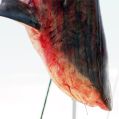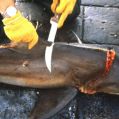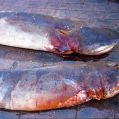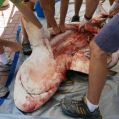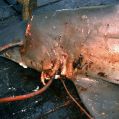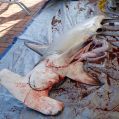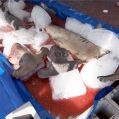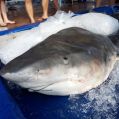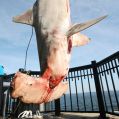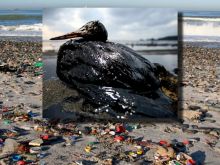Overfishing
2010: Estimate of fishing vessels worldwide: 4.36 million vessels, of which 3.23 million are estimated to operate in marine waters.
Asia has the largest fleet, comprising of 3.18 million vessels, followed by Africa with 11%, Latin America and the Caribbean with 8%, North America with 3% and Europe with 3%.
More than 85% of motorized fishing vessels (worldwide) are less than 12m in length.
2011: 154 million tons of fish and other marine organism caught of which 131 million tons was used for human consumption.
2009: 126 million tons available for human consumption, the lowest fish consumption had Africa (9.1 million tons), while Asia counted for to-thirds of total consumption (85.4 million tons), of which 42.8 million tons was consumed outside China.
2009: fish accounted for 16.6% of the world population's intake on animal protein and 6.5% of all protein consumed.
2004 to 2010: anchoveta (Engraulis ringens) decrease from 10.7 million tons to 4.2 million tons (Southeast Pacific).
About 600 aquatic species are raised in captivity in about 190 countries (there are currently 197 countries).
2010: Global production of farmed food fish was 59.9 million tons, valued at $119.4 billions.
Top then producing countries (for farmed fish) account by quantity to 87.6%, valued of 81.9%.
2010: Fisheries and aquaculture provide livelihood and income for an estimated 54.8 million people, if dependents are added (packaging, marketing and distribution), it is estimated to be around 660-820 million people (10-12% of the world population).
Since 2002, China has been the leading fish exporter, contributing almost 12% of the world exports of fish and fishery products, equalling $13.3 billions, in 2010. Increase to $17.1 billion in 2011.
World's leading importer of marine plants: Japan
Pollution of the marine realm
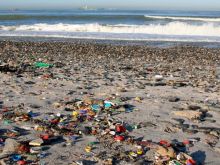
- 5 times more garbage is dumped into the ocean than all the fish caught on a commercial basis
- 60 to 80% of marine litter: plastic
- 1975: World fishing fleet dumped approx. 135,000 tons of plastic fishing gear and 23,600 tons of synthetic packaging material (Cawthorn, 1989)
- Study in North Pacific: 8 out of 11 birds examined had plastic particles in them
- Plastic found in 86% of all sea turtles, 44% of all seabird species, and 43% of all marine mammals (Laist, 1997)


